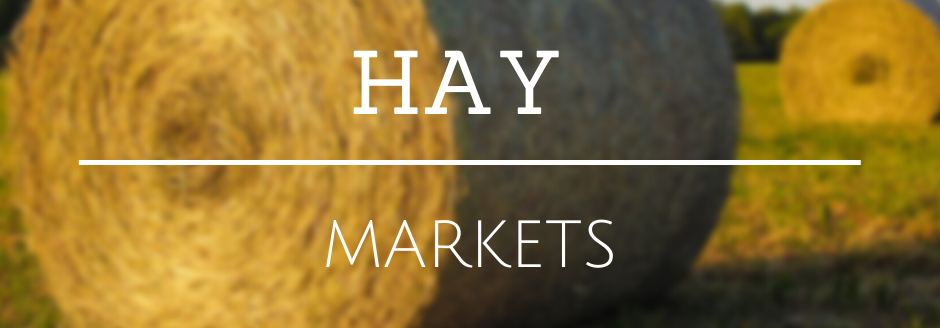Colorado—In the Sept. 14 report, compared to last report, trade activity and demand light. Corn silage harvest is in full swing, reducing trade activity on new hay. Buyers in the northern part of the state have reduced bid offers on alfalfa hay during silage harvest until they can assess their feed stockpiles for the rest of the year. Recent weather conditions have allowed growers to greatly improve the quality of hay put up for second and third cutting alfalfa. Growers are reporting an increase in acres of forage sorghums, triticale, forage wheats, and golden German millet to increase feed stockpiles this year. According to the NASS Colorado Crop Progress report for week ending Sept. 10, alfalfa hay third cutting is 66% complete; fourth cutting is 5% complete.
Missouri—In the Sept. 14 report, compared to last report, hay prices are steady. The overall supply of hay is light to moderate and demand is moderate. It is getting to be quite busy on farms across the state. Many cattle producers are in the process of fall calving and still a few out baling some hay. No wide spread moisture this week but isolated areas here and there got a couple of tenths and heavy morning dews are keeping conditions mostly unchanged as reflected by the latest drought monitor.
Nebraska—In the Sept. 7 report, compared to last report, all reported hay sold steady. Demand was light in most areas, except good demand was noted in eastern parts of the state. Silage chopping and baling cane or millet hay is in full swing. Several talks of high moisture corn harvest starting in the next couple of weeks. Hot and dry weather across most of the state the last seven days burning up grass pastures and dry land crops. Some producers have been baling drought soybeans for hay instead of combining it. Next report will be released Sept. 21.
Oklahoma—In the Sept. 15 report, compared to the last report, hay is slow to steady. Very little movement across Oklahoma. The state did receive some rainfall throughout most of the state, but we still need some widespread rain as we head into our fall season. Next report will be released Sept. 29.
Texas—In the Sept. 8 report, compared to the last report, hay prices are mostly steady across the majority of the regions, with the exception of the south were prices were still firm on very good buyer demand. Trading activity was moderate to active on good buyer demand. In addition to increased drought conditions, deteriorating pastures and rangelands are stressing livestock. As of early September, 72% of Texas rangelands were in poor or very poor condition. Next report will be released Sept. 22.
South Dakota—In the Sept. 15 report, compared to last report, alfalfa hay steady to weak. Moderate demand for alfalfa currently as producers are showing resistance to asking prices. CRP haying has put some pressure on the overall hay market, yet supplies of high testing alfalfa is limited this year as the drought and heat curtailed growth. Much cooler weather as the temps turned more seasonal. Silage harvest wrapping up. Some soybean harvest has begun already as the dry weather has dried the crops down very quickly.
New Mexico—In the Sept. 15 report, compared to last report, alfalfa hay steady. Trade active, demand good. Alfalfa hay is at 86% finished with third cutting, most producers 62% complete with fourth cutting and starting fifth cutting, The northern part of the state is in the third cutting. Some parts of the state have received scattered showers. Hay and roughage supplies were reported as 19% very short, 46% short, 34% adequate and 1% surplus. Stock water supplies were reported as 17% very short, 36% short, 45% adequate, and 2% surplus.
Wyoming—In the Sept. 7 report, compared to last report, all reported hay sales sold steady. Demand was light to moderate. Most producers in the east are on third cutting of hay. In the central and west producers are on second cutting of alfalfa. There might be a few producers in the central and west that will get a few acres of third cutting put up but Mother Nature will have the final decision. Next report will be released Sept. 21.
Montana—In the Sept. 15 report, compared to last report, hay sold steady to $10 lower. The hay market continues to develop as some larger sales have been confirmed this week. Demand for hay remains light for local hay and mostly moderate for hay to ship out of the state. Rains continues to make putting up hay difficult and some larger sales of rained on hay were seen this week at lower prices. Heavy supplies of rained on hay continue to pressure this quality of hay lower. Not as many Canadian sales were seen this week but producers say interest remains strong for hay to ship north. Market activity continues to improve as more participation and sales occur each week. Producers continue to keep asking prices $180-$200 a ton for green clean hay in squares and sales are occurring in that price range. Hay in rounds remains a large discount to hay in squares as heavy supplies continue to be seen. Demand for straw is moderate. Straw sold fully steady.

